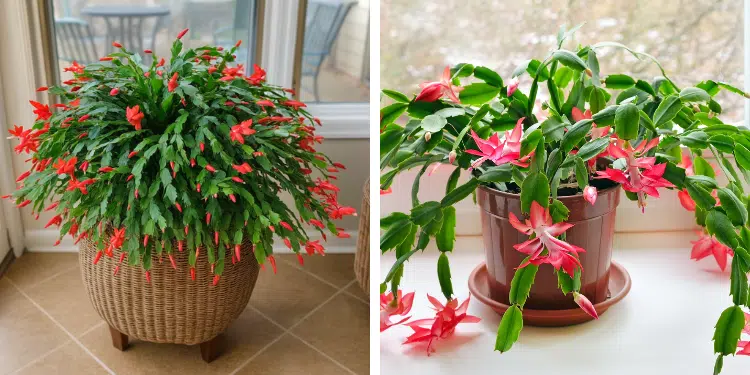Nutrition plays a critical role in preparing your Christmas cactus for blooming. September is when you shift from growth fertilizer to bloom booster.
Fertilizer Schedule in September
Stop high-nitrogen feeding: Fertilizers rich in nitrogen encourage leaf and stem growth, which you don’t want now.
Switch to phosphorus and potassium: Use a fertilizer with a ratio like 5-10-10 or 2-7-7, which promotes strong flower bud development.
Frequency: Feed every 2–4 weeks until late October, then stop until after blooming.
Why This Works
Phosphorus: Stimulates flower bud initiation and enhances bloom quality.
Potassium: Strengthens the plant and helps sustain prolonged blooming.
Homemade Fertilizer Hack
Mix banana peel water (rich in potassium) and a pinch of Epsom salt (provides magnesium, essential for chlorophyll production).
Use this as a natural fertilizer once a month.
4. Prune and Repot Strategically (If Needed)
September is also the last chance to do light pruning or repotting before blooming season.
Pruning
Why prune: Trimming leggy stems encourages branching, which leads to more flowers per plant.
How to prune: Use clean scissors to snip 1–2 segments off the ends of each stem. You can root these cuttings in fresh soil to grow new plants.
Repotting
When to repot: Only repot if your cactus is rootbound or the soil is old and compacted.
Potting mix: Use a loose, well-draining mix (equal parts potting soil, perlite, and orchid bark works well).
Pot size: Choose a container only slightly larger than the current one; Christmas cactus blooms best when slightly rootbound.
Warning
Avoid heavy pruning or repotting too late in September, as this can stress the plant and prevent it from setting buds.
5. Create a Rest Period to Trigger Blooms
Perhaps the most overlooked step in September is giving your plant a resting phase. This “quiet time” helps redirect the plant’s energy from foliage growth to flower production.
How to Provide Rest
Reduce watering slightly (as mentioned in Step 1).
Stop heavy feeding after mid-October.
Provide consistent dark periods at night (as in Step 2).
Signs of Bud Development
By late September to early October, you should notice tiny nubs forming at the ends of the stems.
These are your future flowers. Handle the plant gently at this stage – any stress can cause buds to drop.
Extra Tips for Maximizing Blooms
Rotate the pot weekly: This ensures even light exposure and symmetrical bud development.
Maintain high humidity: Place a tray of water and pebbles under the pot to raise local humidity.
Avoid moving the plant once buds form: Even slight relocations can cause bud drop.
Companion plants: Keep near ferns or orchids to mimic rainforest-like humidity.
Troubleshooting: Common Problems in September
Problem Cause Fix
Buds not forming Too much light at night, too warm Ensure 12–14 hrs of darkness, lower night temps
Yellowing leaves Overwatering or poor drainage Allow soil to dry slightly, repot if compacted
Bud drop Drafts, sudden relocation, inconsistent watering Keep plant in stable conditions
Stunted growth Lack of nutrients Switch to bloom fertilizer
September is the golden month for Christmas cactus care.
By adjusting watering, controlling light and temperature, shifting fertilizer, pruning strategically, and creating a rest period, you give your plant exactly what it needs to set flower buds.
Follow these five essential steps, and by the time the holidays arrive, you’ll be rewarded with lush cascades of blooms that last for weeks – bringing color, joy, and beauty to your home.
